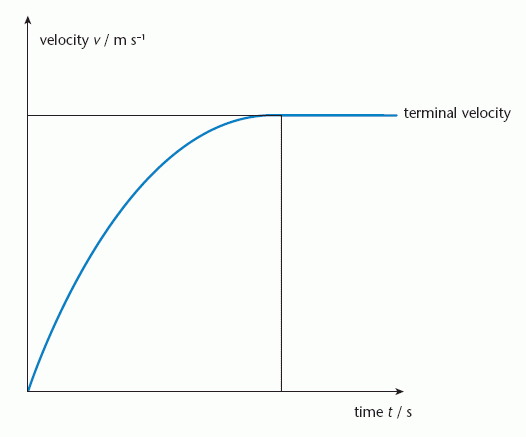Terminal Velocity
If an object is falling through a fluid, e.g. air or water, as its speed increases the drag on it will also increase. Eventually a speed is reached where the upward force will equal the weight of the object. As there is no net force on the object the acceleration will be zero. The object will fall at a constant velocity. This velocity is called the terminal velocity.
Similarly for a car, or other vehicle, when it reaches a speed where the sum of all the forward forces, i.e. the thrust = the sum of all the resistive forces, i.e. the drag, the vehicle will move at a terminal velocity.
Image


